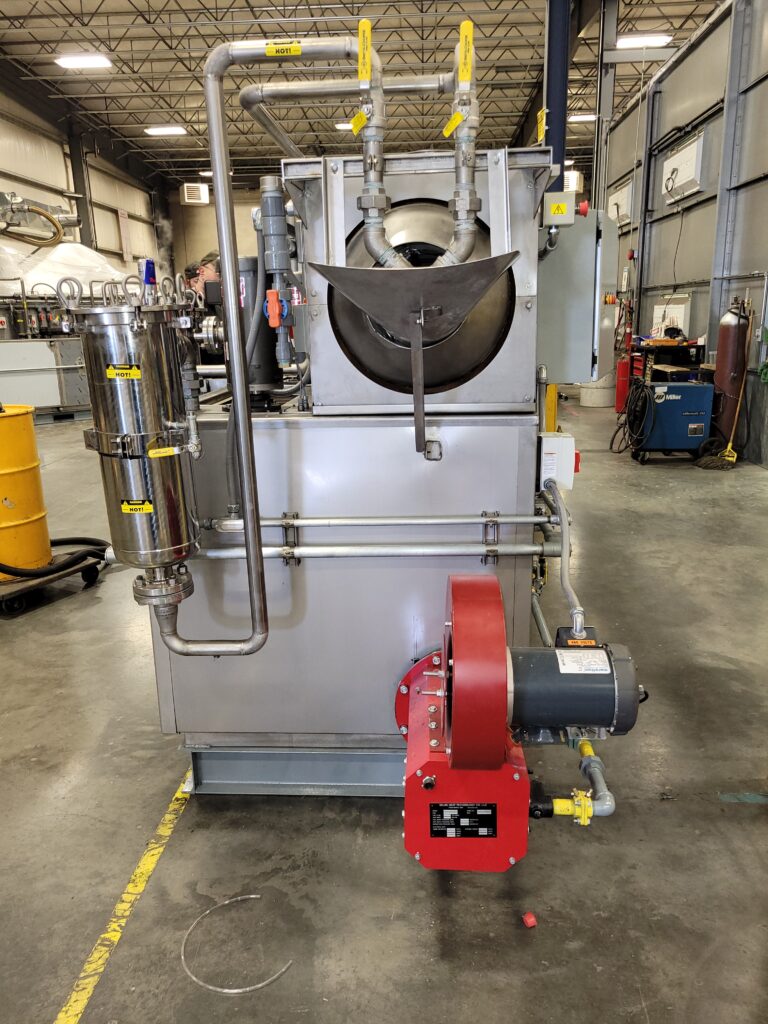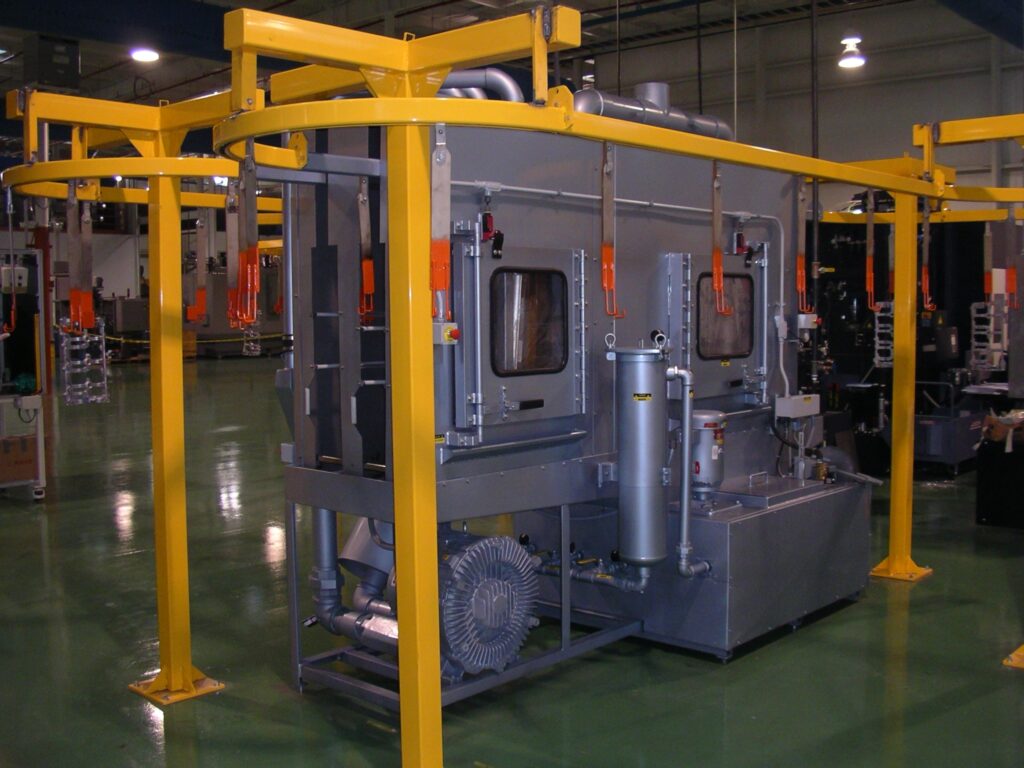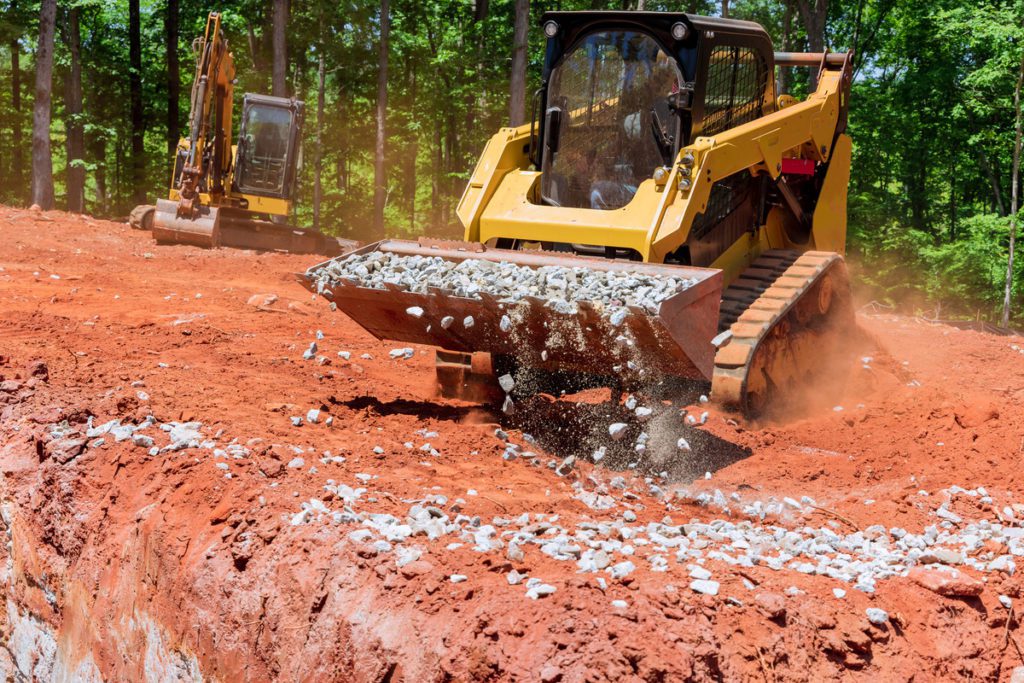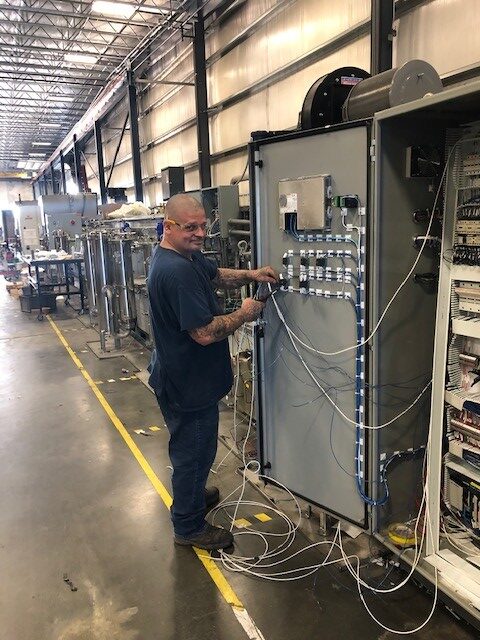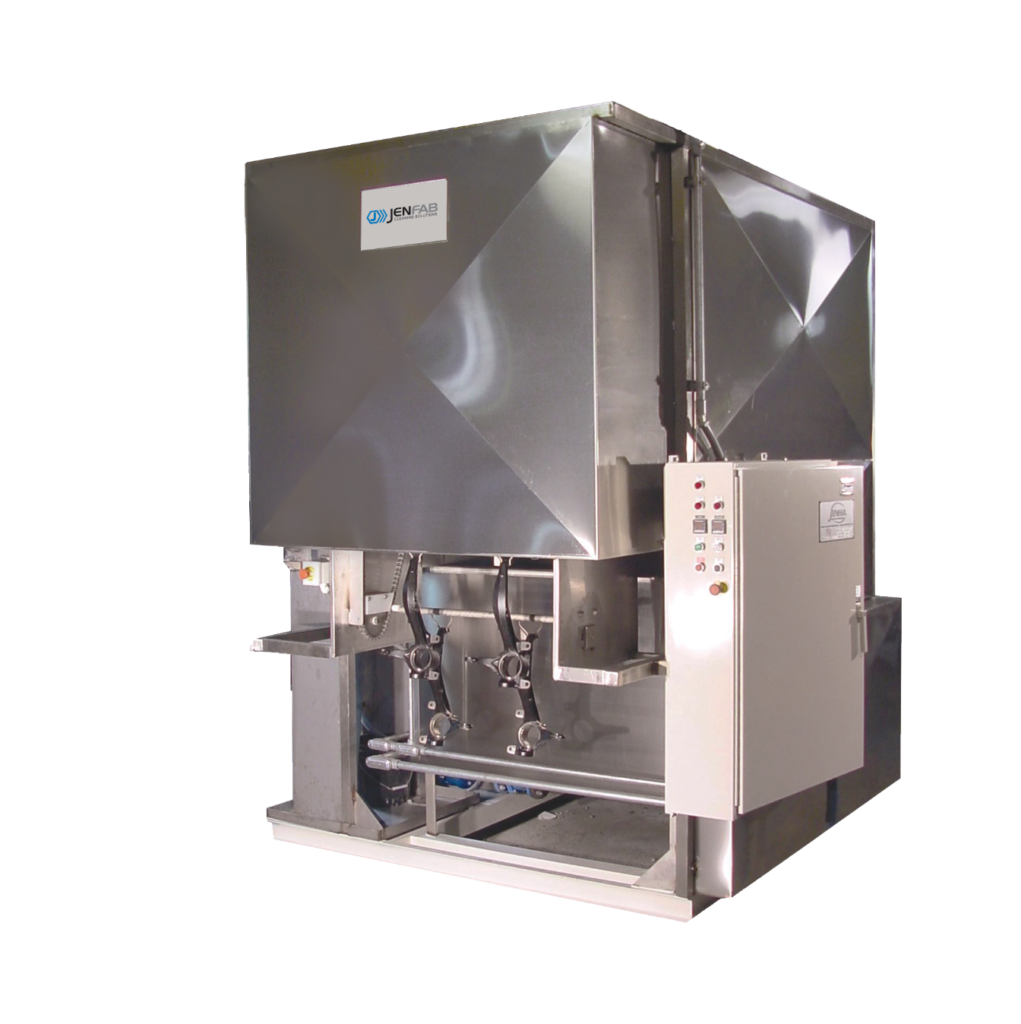Heat is a powerful tool in parts cleaning. Time, temperature, mechanical agitation and chemistry are the four main factors of cleaning. Each factor determines if the parts cleaning process is effective.
Strike the right balance, and you have a process that achieves the clean you need. Higher temperatures generally speed up the cleaning process, regardless of what or how you are cleaning.
Is it helpful to add heat to parts washers? Yes!
Adding heat removes soils from parts more effectively than pressure or agitation alone. An automated parts washer is the best choice for high heat. Hand and sink on drum washers become dangerous for operators when you turn up the temperature.
Why does heat bump up cleaning speeds? Why does hot water make a difference?
It has to do with energy.
A Rule of Thermodynamics
All organic matter wants to exist at the same temperature.
We’ve all poured an ice-cold cup of water only to leave it on the counter for hours. When you come back to the glass of water, you notice something disappointing: it’s room temperature.
The same goes for a hot cup of coffee. Your mug of Joe cools off the longer it sits on your desk as heat transfers to the air around it. Eventually, if you don’t drink it up, it cools to room temperature.
Heat excites molecules. In hot water, molecules move faster.
Going back to the coffee example, the molecules in the hot coffee move faster than those in the cooler air around it. The energy from the hot coffee transfers to the cooler air, causing the cooler molecules to move more rapidly as they absorb the heat. The coffee’s temperature is reduced as energy is transferred.
Pretty cool, right?
Heat is energy. The more energy involved, the faster the molecules move and the quicker a chemical reaction will take place. That’s why adding heat to parts cleaning can help speed up the process.
How Heat Affects Parts Cleaning
Aqueous parts washers use a water-based cleaning solution often referred to as a chemistry within the industry. The chemistry is tailored to the contaminants and material of the parts.
Molecules from the chemistry attach themselves to the part, allowing water to get between the part’s surface and the contaminant. The soil is loosened from part and carried away by the flow of water through the machine.
Temperature affects parts cleaning chemistries, as it does common household detergents and soaps. Most cleaners will work harder with the addition of hot water. Adding heat (energy) to your parts cleaning chemistry forces molecules to move faster, accelerating the chemical reaction.
For every 17℉ increase in temperature, you could double your chemical reaction rates, so the entire cleaning process takes less time. Typical operating temperatures for heated parts washer tanks range from 120° to 160℉.
We’ve talked about heat in relation to cleaning chemistry, but heat can also affect the properties of the soils you’re trying to remove. Higher temperatures tend to decrease viscosity in contaminants and reduce the surface tension of water. Both factors make removing stuck-on soils easier.
Keep in mind that increasing heat only works up to a certain point. Water that’s too hot can damage the surface of the parts.
Heated Aqueous Parts Washers & Managing Hot Water
Aqueous parts washers with heated tanks can be designed specifically for your application. Heated parts washers use spray, immersion or both techniques to clean parts. Heated parts washer tanks store cleaning chemistry at the proper temperature. Used cleaning solution is reheated when it returns to the tank.
A part washer’s heating element is attached to the tank. Most hot parts washers experience some amount of heat loss due to the air temperature outside of the tank. However, the proper design can alleviate much of the loss.
Sometimes, heat can reduce water pressure. This is important for heated parts washers that use sprayers. When choosing or designing your machine, the relationship between heat and pressure is something to consider.
An automated parts washer will regulate the cleaning solution’s temperature. You’ll want to follow the recommendations from the machine’s manufacturer.
Too much heat can be detrimental to part surfaces. Scorching solutions can cause corrosion or etching. Not to mention high heat can result in more evaporative losses. On the flip side, too little heat can cause chemistry to foam or delay the cleaning process.
4 Benefits of Heated Parts Washers
Generally, you’ll get better results when your cleaning solution is at a higher temperature. Heated aqueous parts washers let you manage the temperature of the cleaning solution to maximize your efficiency. Adding heat to parts cleaning machines offers several benefits for your company or shop.
- 1. No need for harmful solvents. Toxic solvents, be gone! Heated aqueous parts washers harness a natural power: hot water.
- 2. Less chemistry is required. Heat makes chemical reactions more effective, reducing your need to use copious amounts of cleaning chemistry. With heated aqueous parts cleaning, you only need small amounts of chemistry.
- 3. Better for sanitation. Heated washers help sanitize parts for the medical and food industries. Hot water does a better job of breaking down bacteria and eliminating minuscule microorganisms when compared to cold water.
- 4. Bye-bye, film layers. Greasy parts? Can’t get them clean? Some grease is bound to be left behind with cold water. Leftover grease forms a layer of film over the part. Hot water and parts washer soap thoroughly remove hydrocarbon and petroleum contaminants.
Heated Aqueous Parts Washers for Sale
Are you ready to bring the heat to your floor?
Improve your parts cleaning process with our custom-built or ready-to-ship aqueous parts washers.
Our knowledgeable team will help you identify the features you need in a machine based on the material, size and complexity of the parts and soils, as well as your space and budget. Explore our full line of industrial parts washers here.
Take aqueous parts cleaning to the next level.
Request a quote from us today or call (800) 524-9274 to speak with our team about your next heated cleaning system.












